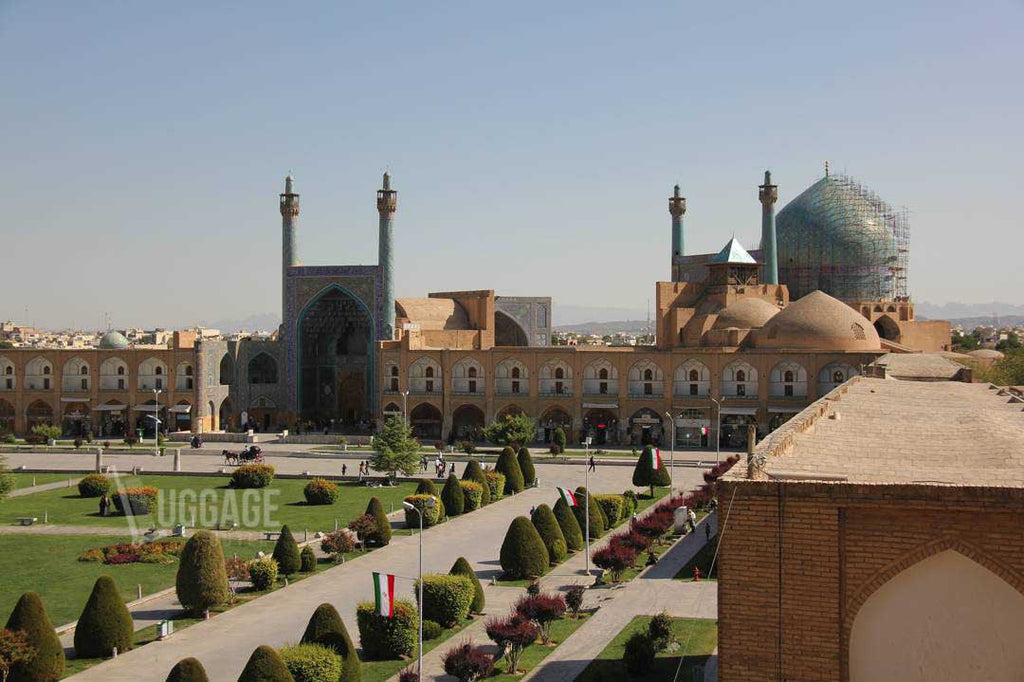Isfahan, also known as Esfahan, was the capital of the Safavid dynasty in 1598. Famous for its beautiful architecture such as covered bridges, palaces, mosques and minarets, it also led to an old Persian proverb "Isfahan is half of the world". Indeed, the architecture we've witnessed in this first stop of our Iran trip had set the expectations very high.
We spent a total of 2 and a half days in Isfahan.
Expenses for 2 persons: S$560 (Entry visa - $165, Hotel - S$165, Meals - S$60, Transport - S$70, Entrance tickets - S$50, Shopping - S$50)
Things to Do / Places to see in Isfahan
The night flight from Istanbul Ataturk airport brought us to Isfahan in the wee hours of the morning, arriving at 3am. It was interesting to observe that all ladies put on their headscarfs as the the plane began its descent into Esfahan. It is mandatory (regardless of individual's religion) for ladies to put on headscarfs and dress conservatively (with tops that cover their hips) throughout their time in Iran. Even though the queue for the visa counter (S$83 per pax) was short (less than 5 persons), it took quite a long time (30-45mins) for the visa to be processed and issued. By the time we left the airport, it was already 4am in the morning.

Thankfully our hotel, Hasht Behesht Apartment Hotel (S$83 per night), provided airport pickup service (US$20) even in these odd hours. The hotel is a 10-minute walk away from the famous Naqsh-e Jahan Square, a UNESCO World Heritage Site. As we walked towards the square on that morning, we were slightly choked by the smell of CO2 due to the fumes from incomplete combustion of dated cars. Due to the international trade sanctions, Iranians usually drive locally-made Saipa or Peugeot cars.

Here's a typical street view:
Naqsh-E Jahan Square is a huge square with 3 main buildings on each side of the Square - Sheikh Lotfollah Mosque, Ali Qapu Palace and the Naqsh-E Jahan Mosque. The souks alongside the Square and nicely manicured gardens in the centre complete the maiden Persian experience.

*Tip: There are quite a number of Persian carpet merchants in the Square, who always readily offer you a cup of tea at their shop. While we were eager to befriend the locals, some of the merchants are quite pushy and might not be too happy should you not buy any carpets from them. Therefore, kindly decline their offer of tea if you realised they're from the carpet shops, unless you intend to get a carpet (from US$200 upwards, but considered 'cheap' since it's direct from the manufacturing country). To distinguish merchants from Iranians who are sincere in welcoming you as a friend, merchants usually approach you alone, and speaks fluent English.
Our first meal in Iran was a shop at the corner of the Square (at the end of the side with Ali Qapu palace), and turned out to be a very good place for a local dish Chicken Tahcheen - Rice flavoured with saffron, yogurt, egg yolks, layered with chicken breast, barberries, walnuts and pistachio slices. Crispy on the outside and soft on the inside, insanely delicious!

To offer a perspective of how MASSIVE the serving was.

By the way, the servings (especially the rice) are generally huge in Iran, so a main course is sufficient for a travelling couple. Moreover, you need to reserve some space for a delicious Iranian dessert - Faloodeh, made of vermicelli noodles made from corn starch, sticky ice cream drenched in lime syrup.

Ali Qapu Palace (150,000IRR / S$6 per pax), built in the 17th century, was used by the monarch to entertain visitors and ambassadors. The ceiling of the entrance to Ali Qapu Palace, as with most Persian architecture, was beautifully-designed with repetitive yet artistic motifs. The designs here were even carved to produce a '3D' effect.
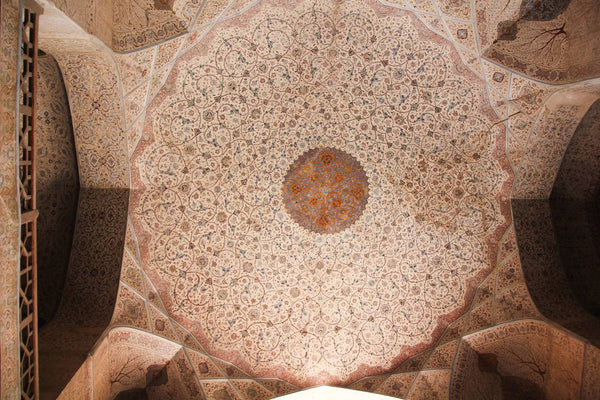
The music halls of Ali Qapu Palace were mesmerising, designed to enhance the quality of music produced in the palace during the old times.

Looking at the ceilings became a habit when we were in Iran as they were all so beautiful.
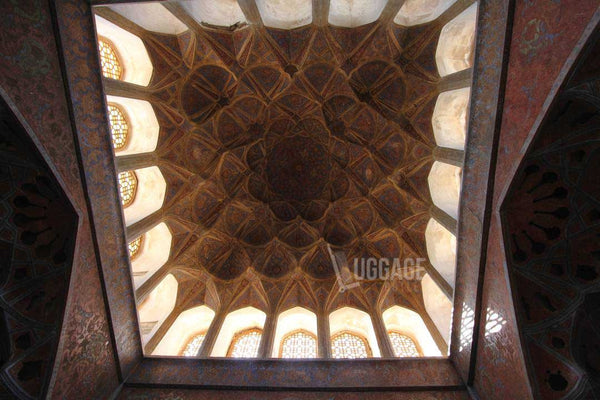
Built between 1603-1619, Sheikh Lotfollah Mosque (100,000IRR / $4 per pax) is one of the architectural masterpieces of Safavid Iranian architecture. It was built as a private mosque for the royals. Here's the ceiling of the massive pillar-less dome, with lemon-shaped designs that decrease in size as they go towards the apex.

Below was the towering entrance to Shah Mosque (150,000IRR / S$6 per pax), the mosque on one end of the Naqsh-E Jahan Square.

The hand-painted artwork on these ceilings and pillars were definitely among the finest Persian arts.

Depicted on the reverse side of the Iranian 20,000 rials note, Shah Mosque is regarded as one of the masterpieces of Iranian architecture. This dome is the largest one in the city, at the height of 52m.

The souks, otherwise known as marketplaces or bazaar, have retained its rustic charm and do not look as 'commercial' and well-renovated like the ones at Istanbul's Grand Bazaar.

The souk is segregated into different areas, selling from handmade copper crockery, to spices, to Persian carpets, to very intricately painted art pieces.

The Art of Minakari, or Enamelling, is the painting of metal surfaces with intricate designs. All of these were hand-painted. A set of 2 small display saucers cost us around US$20.

Reminded me of the 'Lapis Sagu - thousand layer nonya cake' that Singaporeans loved to eat, this is actually a 7-layer spice stack.

We spent the evening soaking in to the surreal surroundings of the Naqsh-e Jahan Square, as the Azan (call to prayer) was played throughout the Square.

Siosepol Bridge, a bridge with 33 arches, is Iran's largest construction on water, spanning 298 metres and a width of 13.75 metres. While the beautiful reflections (as seen online) that the bridge casted on the water was what got us to this bridge, the recent developments upstream had caused the riverbed to dry up.

Smoking Shisha (flavoured tobacco through a waterpipe) is one of the activities the locals do to unwind themselves after a long day.

Picnic, is another favourite pastimes of Iranians. They can practically picnic at any grass patches you see!

The following day, we went to Chehel Souton, one of the 9 gardens inscribed as Persian Garden in UNESCO World Heritage Site. Persian gardens, dating back to 6 BC, typically have sophisticated irrigation systems, buildings, pavilions and walls. Taj Mahal's garden design was also said to be influenced by Persian Garden. Doing a little 'jumpshot' at this UNESCO site ;)
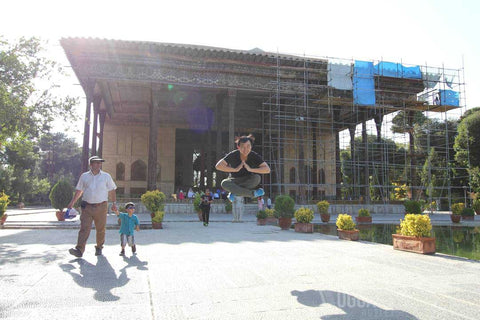
The exquisite artwork on the ceiling of the palace.

The palace contains many frescoes, such as the one below, which depicts the Battle of Chaldiran, marking the time that Ottoman empire conquering land from the Safavids.
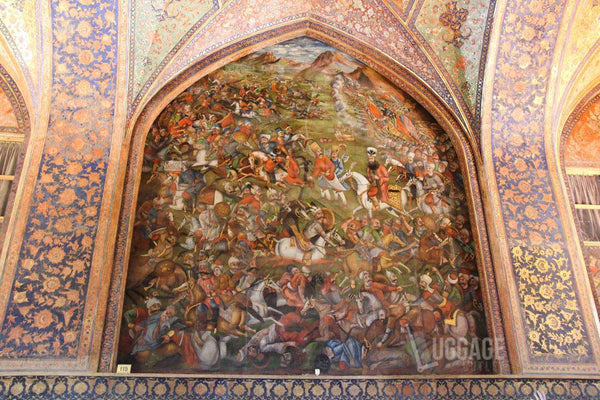
It felt like we have gone back in time, seeing these rows of 'vintage' sedan cars.

Towards the evening, we visited Jame Mosque, a UNESCO World Heritage Site for being the Islamic building prototype for later mosque designs throughout Central Asia. It is the oldest congregational mosque in Iran, and when we went in, the congregation was gathering to prepare for their prayers. Even though we had a huge language barrier, one of the young helpers guided us around the mosque, and we eventually settled down with a group of locals who treated us to their yummy local snacks and fruits.

Khaju Bridge, another bridge along the Zayandeh River (similar to Siosepol Bridge), was where we ventured for the second night.

Even though we walked past some dark alleys and deserted streets to reach these bridges from our hotel (about 45 minutes walk), we never felt unsafe and the people along the streets and bridges were all very friendly and welcoming towards us.
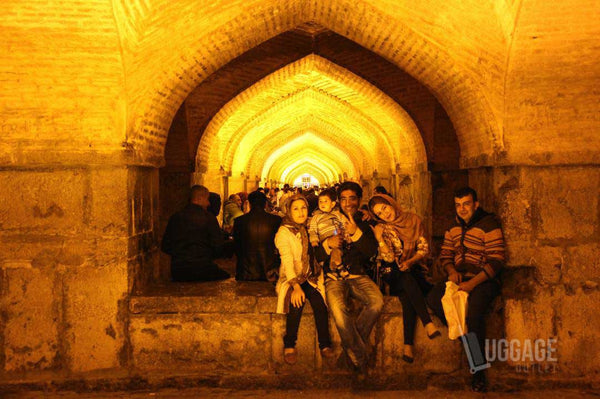
On the morning of the third day, we visited Vank Cathedral (150,000IRR / S$6 per pax), a cathedral with very beautiful wall art depicting scenes of the Bible and also has a museum dedicated to commemorating the victims of the Armenian genocide.

This Cathedral was established in 1606, for the Armenian deportees that were resettled here during the Ottoman War. The interior of the Cathedral was as beautiful as it can get, with gold painted dome and brightly-coloured frescoes.

This is the mural depicting Heaven, Earth, and Hell.

The audio guide (150,000IRR / S$6 per pax) we rented at the Cathedral's entrance also allowed us to understand the meaning behind each mural better.

Enroute to Vank Cathedral, this was a bakery shop which sells all sorts of biscuits and pastries.

We thought that it's pretty good, so give it a try if you're going Vank Cathedral!

Before we made our way to the next city, Yazd, we had to visit Abbasi Hotel, the oldest hotel in the world (gasp!). With its luxurious exterior and elaborate interior design, it is probably the top hotel in Isfahan and commands a high room rate (for our budget).

We weren't prepared to stay here, but having a meal (768,000IRR / S$30) was definitely satisfying for us. Friendly staff, posh settings.. we can't wait to get our lunch started!
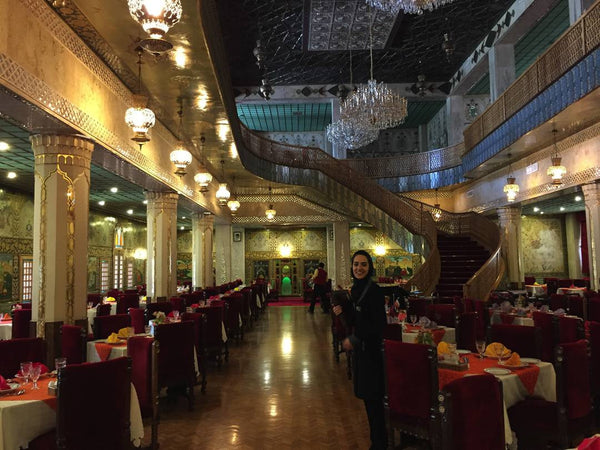
Iranians use a lot of saffron and barberries to enhance the flavour of their rice, and we were even given this saffron butter to go along with our fragrant rice.
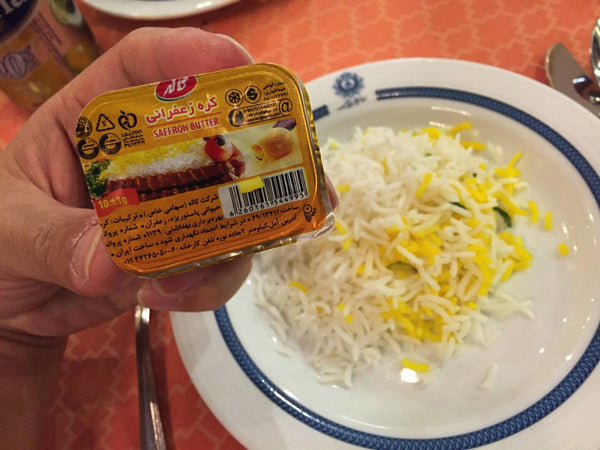
Saffron ice cream! There's always room for dessert :)

The backyard of Abbasi Hotel. In a recent article I saw online, this space was converted to a dining area ever since tourism has picked up in the last couple of years.

Hope this would entice you to visit the city of Isfahan some time really soon!
Next stop: Yazd

